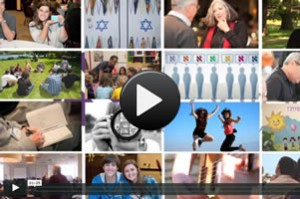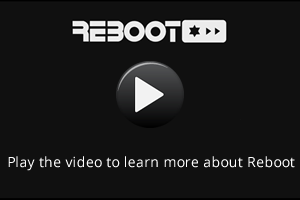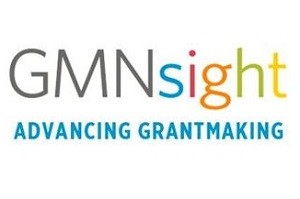Editor’s Note: The Jim Joseph Foundation has awarded three grants to Reboot totaling up to $6,547,490 beginning in 2008. The following guest blog from Reboot’s Robin Kramer and Amelia Klein ran originally in eJewishPhilanthropy.
“Reboot showed me that if community wasn’t there
then the best thing to do was to get up and make it happen.”
This is the sentiment of a Rebooter, a member of the network launched by Reboot, the young nonprofit now just past its bar/bat mitzvah year. Reboot affirms the value of Jewish traditions and creates new ways for people to make them their own, principally through the doors of creative culture. Inspired by Jewish ritual and embracing the arts, humor, food, philosophy, and social justice, Reboot creates highly imaginative projects that spark the interest of young adult Jews and the larger community through live gatherings and events large and intimate, and through exhibitions, recordings, books, films, DIY activity toolkits, and apps – a distinctive blend of digital, analogue and the bridge between.
Reboot recently commissioned Greenberg Quinlan Rosner Research (GQRR) to study its impact and effectiveness in creating opportunities for members of the Reboot network to explore their Jewishness and what, if any, changes in their Jewish lives have emerged as a result. Since Reboot’s creation in 2002, the network of Jewish cultural creatives in their late 20s to early 40s, has grown to 480, and who live primarily in the hub communities of LA, SF and NY, with smaller cohorts in DC and London. The network is self-organizing and created via nomination by existing members. A critical point is that a vast majority of the network say they were un or disconnected from Jewish life prior to Reboot. The GQRR research engaged 42% of the network and encompassed an online forum, an opt-in web survey and in-depth interviews.
The results of the GQRR study are instructive, offering lessons for us and other organizations to draw upon. The findings are particularly illuminating, as they run counter to the headline narratives of a spiraling dismal future for Jewish connection and identity among younger generations.
In our view, there is no “secret sauce” here but many transferable notions to draw upon from Reboot’s design – authentic open space methodology, welcoming ways, great questions and low barriers of entry that invite exploration of Jewishness; creative peers and support from amazing teachers, all combined with a hip contemporary sensibility of style, beauty and experimentation, and importantly, a do-it-yourself mindset with support coming over time, not just one time. The emergent big “ah-ha” is at once forward-looking and ancient: that Judaism is malleable, mine to shape and share.
Opening Up Judaism
“Reboot has made me feel as though I can claim the label of Jewish even though I didn’t have a typical Jewish upbringing nor do I live a very Jewish (religious or traditional) life.”
“Reboot puts Judaism in play, makes it active and alive. It presents the same big question, but from dozens of angles a year: What am I going to do with my Jewishness? It asks questions that beg answers. Questions that cannot be ignored. Dozens of times a year, those questions put me in play, and those questions pull me toward interacting with Jewishness.”
The research show that Rebooters feel a greater sense of ownership over their Jewishness, and have a new found confidence around rituals, practice and spirituality. Just over three-quarters (77 percent) said they have a strengthened connection to being Jewish. 92% attach importance to Reboot as a forum to explore Jewishness that fits with their values and lifestyle. The organization’s local programming model encourages members of the network to design and create their own Jewish experiences, fromShabbat dinner gatherings to text study salons to reinterpretation of holidays and rituals. The flexibility in both programming and creative brainstorming opportunities fosters ongoing, open and fluid pathways for exploration and collaboration.
Engaging and Participating in Jewish Life
“The Jewish rituals I know… are largely, my parents’ traditions. The twist Reboot has enabled/inspired in me is the process of figuring out how to make them my own (and, more broadly, that of my generation).”
For many members, being part of Reboot has raised their consciousness of being Jewish and Jewishness, and led them to take a greater interest in Jewish themes (64% in Jewish culture or history, and 61% in Jewish religion or ritual). Nearly half (47%) say they have more Friday night Shabbat dinners and over half (55%) say they are doing more to celebrate Jewish holidays.
Though involvement with Reboot does not, for many, translate into an embrace of conventional Jewish institutions, just under a fifth (19%) have joined a Jewish congregation and 22% have joined other Jewish groups. A quarter have taken a leadership or board position within the Jewish community.
The study offers further impetus about how best to impart Jewish identity and knowledge and to raise a Jewish family. Nearly half (49 percent) of Rebooters with children indicate that they do more to raise their kids Jewish and many asked for further exploration and assistance. One member noted: “One thing Reboot has done for me in this regard is approaching my children’s interaction with Judaism in a different light. I’m thinking about what a Jewish education means in relation to their lives (and how that Jewish education should look) and weighing meaningful experiences differently within that context (the embrace and execution of Jewish values vs. rote Jewish learning, for example).”
Welcome and creativity at the core
Reboot’s program methodology places Rebooters at the center of the design process whereby projects are generated by the network for the network. The emphasis is placed on an invitation to create (or not), on member-generated content rather than a top-down approach. The peer-to-peer learning, creativity, idea generation, incubation and piloting of ideas feeds back to the network in the form of programs, events, gatherings and listserv conversations. These projects and products then are grown to become tools and resources for Reboot’s 700+ community organization partners who utilize the ideas, content and DIY materials to engage their own audiences and constituencies. Hundreds of thousands have now participated in Reboot and such Reboot-inspired programs as the Sabbath Manifesto/National Day of Unplugging, 10Q for the Ten Days of Awe, forSukkot, Six Word Memoirs on Jewish Life, etc. through this inventive process.
The key to “making Jewish my own/our own” starts with creating a welcoming, flexible space to explore Jewishness on the terms of participants, enabling young Jews to take ownership of their Jewish lives and inspiring them to think about their families, careers and communities through a Jewish lens. Simultaneously the project ideas generated by the network are making Judaism relevant and accessible, translating ancient traditions into modern language for current and future generations. The findings from this research are instructive for all who care vibrantly, and optimistically, about the future of Jewish life.
The executive summary of this study is available at: www.rebooters.net/impact. For further inquiry, please contact Graeme Trayner, principal investigator from Greenberg Quinlan Rosner Research: [email protected], or Amelia Klein: [email protected].
Robin Kramer is Reboot’s executive director; Amelia Klein is Associate Director.
 Federations in the 21st century will be as much about meaning as money, as concerned with results as much as with resources, and be held to higher standards of both efficiency and effectiveness similar to what they have imposed on their beneficiary agencies.
Federations in the 21st century will be as much about meaning as money, as concerned with results as much as with resources, and be held to higher standards of both efficiency and effectiveness similar to what they have imposed on their beneficiary agencies.
 iCenter opportunities and initiatives continue to grow and expand. Its “Conflict Toolkit” is a sophisticated and nuanced approach to learning, discussing, and understanding Israel in conflict. The
iCenter opportunities and initiatives continue to grow and expand. Its “Conflict Toolkit” is a sophisticated and nuanced approach to learning, discussing, and understanding Israel in conflict. The  Five local day schools have collected more than 21 million ways to make Jewish education more affordable in Los Angeles.
Five local day schools have collected more than 21 million ways to make Jewish education more affordable in Los Angeles.


 Last month, a group of 15 different organizations (15!)
Last month, a group of 15 different organizations (15!)  With new focus on ‘21st century skill-set,’ camp is fast becoming another data point on a teen’s resume.
With new focus on ‘21st century skill-set,’ camp is fast becoming another data point on a teen’s resume.